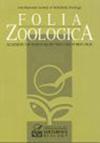雄性狍的领土行为:空间行为和活动水平的遥测研究
Q2 Agricultural and Biological Sciences
引用次数: 5
摘要
摘要狍(Capreolus Capreolus)被认为是一种特殊的领土有蹄类动物。本研究旨在通过探索雄性狍的空间利用和活动模式,为了解其领地性提供依据。我们将领地期(3 - 8月)分为3个2个月的采样期,发现13只无线电项圈雄性的家庭范围(HR)大小平均为47.9±14.5 ha至109.7±31.9 ha。我们将13只雄性中8只的空间行为分为3组,并得出结论,单凭HR大小的变化并不能解释潜在的领土地位。然而,当考虑到雄鹿的年龄、空间运动和活动水平时,它表明了它们的领土地位。7 - 8月的活动水平显著低于3 - 4月的活动水平。被监测的男性的HR大小变化显著地解释了他们活动水平的变化。老雄鹿明显不如其他雄鹿活跃,尤其是在7 - 8月。总而言之,我们发现了空间分布对活动水平影响的迹象,尽管为了更好地了解年龄和领土地位的差异以及活动的个体间差异,还需要更大的样本。本文章由计算机程序翻译,如有差异,请以英文原文为准。
Territorial behaviour of male roe deer: a telemetry study of spatial behaviour and activity levels
Abstract. The roe deer (Capreolus capreolus) is considered a special case of territorial ungulate. This study aimed to contribute to the knowledge of male roe deer territoriality by exploring its spatial use and activity patterns. We divided the territorial period (March–August) into three two-month sampling periods and found that the home range (HR) size of 13 radio-collared males averaged from 47.9 ± 14.5 ha to 109.7 ± 31.9 ha. We classified the spatial behaviour of eight out of the 13 males into three groups and concluded that HR size variation alone did not explain the potential territorial status. Nevertheless, it was indicative of their territorial status when considered along with the bucks’ age, spatial movements and activity levels. The activity levels of July–August were significantly lower than the activity levels of March–April. HR size variation of the males monitored significantly contributed to explain the variations in their activity levels. Old bucks were significantly less active than other males, especially during July–August. To sum up, we found an indication of an influence of spatial profiles on activity levels, though a larger sample will be needed in order to better understand differences in age and territorial status, and inter-individual differences in activity.
求助全文
通过发布文献求助,成功后即可免费获取论文全文。
去求助
来源期刊

Folia Zoologica
生物-动物学
CiteScore
1.70
自引率
0.00%
发文量
0
审稿时长
3 months
期刊介绍:
Information not localized
 求助内容:
求助内容: 应助结果提醒方式:
应助结果提醒方式:


